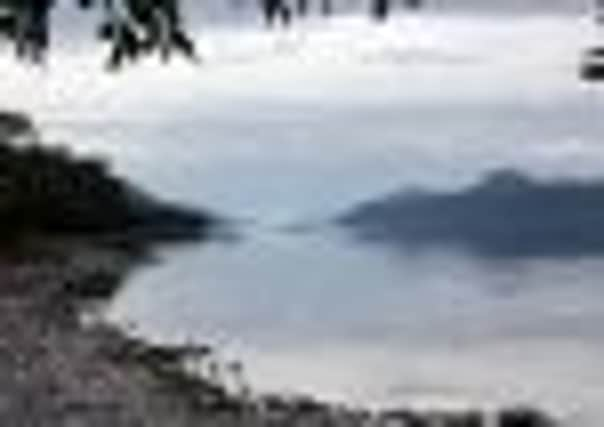Exploring Scotland’s lochs


Loch Morar
Depth: 1,016 ft
Water Volume: 507 billion gallons
Loch Morar is home to the famous Silver Sands of Morar which were one of the locations used in the film “Local Hero” starring Burt Lancaster.
Situated on the West coast of Scotland, Loch Morar is the fifth largest loch in Scotland and the deepest freshwater lake in the British Isles, making it the 17th deepest in the world. It contains eight wooded islands (Eilean a Phidhir being the largest), the majority of which are located towards the western end of the loch. Due to the closeness of the sea, it is implied that Loch Morar was once a sea loch.
Advertisement
Hide AdAdvertisement
Hide AdDuring the last Ice Age (2 million – 11,500 years ago) glacial erosion shaped Loch Morar. Nowadays, the shoreline is generally uninhabited, apart from the village of Morar and a few small hamlets at the western end of the loch, and accessible only by boat. The reason for this is the Highland Clearances of the late 18th and early 19th centuries. Most of the crofters living around Loch Morar were driven out to make room more profitable sheep.
As with many Scottish places, a myth surrounds Loch Morar. It is speculated that a creature to rival the Loch Ness Monster resides in the lake. It goes by the name of Morag. The most notable alleged sighting occurred in 1969 when two boatmen vowed to have seen a brown serpent-like creature with three humps.
Loch Ness
Depth: 754 ft
Water Volume: 1.64 trillion gallons
Loch Ness is by far the most famous loch in Scotland and contains more fresh water than all of the lakes in England and Wales combined.
The renowned Loch Ness is positioned south west of Inverness and houses an artificial island called Cherry Island which can be seen in the loch from near Fort Augustus. The loch’s still waters are particularly murky due to the high peat content from the surrounding hillside.
Loch Ness was created by movements of glaciers during the Ice Age. The loch is overlooked by the ruins of the thirteenth century Urquhart Castle, near Drumnadrochit, which is one of the most popular tourist attractions in Scotland. Presently, the ruins are owned by the National Trust of Scotland
The myth of the Loch Ness Monster is likely to be Scotland’s most famous creation. There have been many reports of this creature in and around Loch Ness since the sixth century AD but the existence of the monster has not yet been confirmed. Despite this lack of evidence, hoards of tourists still visit the Loch Ness every year in hopes of gaining a sighting of the elusive beast.
Loch Lomond
Depth: 623 ft
Water Volume: 577 billion gallons
Loch Lomond is home to thirty islands, including Inchmurrin, which is the largest island on any freshwater lake in Great Britain. It is also home to a naturist club.
Advertisement
Hide AdAdvertisement
Hide AdWater from the loch also powers the nearby Inveruglas power station and, since 1971, up to 100 million gallons have been soaked up each day to boost water supplies in central Scotland.
The shores of Loch Lomond have been populated for thousands of years by clans such as Lennox, MacGregor, Colquhoun, Graham, MacFarlane and Buchanan.
Loch Lochy
Depth: 531 ft
Water Volume: 246 billion gallons
Loch Lochy is a large strike-slip fault which separates the northern Highlands from the Grampian Highlands.
From Gairlochy, Loch Lochy stretches for ten miles up the Great Glen to Laggan. It is the most south-westerly of the deep three lochs that lie in the depression (the others being Loch Ness and Loch Oich).
Formed 360 million years ago, Loch Lochy has bore witness to two major clashes between feuding clans. In the summer of 1544, the Fraser clan met the fierce opposition of the combined efforts of the Cameron and Ranald clans. Their battle ground was Kilfinnan, towards the north-western end of the loch, and many died, though the winner was unclear. The second clash was less violent. In 1665 the Chattan Confederation, made of 16 clans, stood against the Clan Cameron to settle a long-running dispute over land. This argument ended after a week with Clan Cameron buying the land from their enemies.
Loch Lochy is said to have a humped plesiosaur-type creature similar to the Loch Ness Monster (named Lizzie) living within its depths. Lizzie has been spotted many times over the last 90 years, the first being in 1929 when two local gamekeepers reported seeing a large creature swim a mile along Loch Lochy before submerging. More recently, a 20ft long ‘creature’ was detected using sonar moving at a depth of 200ft in the loch.
Loch Ericht
Depth: 511ft
Water Volume: 248 billion gallons
Loch Ericht is interesting in that it is a loch which is dammed at both ends.
Advertisement
Hide AdAdvertisement
Hide AdSituated near Dalwhinnie, Loch Ericht is the tenth largest freshwater loch in Scotland. Loch Ericht’s southern dam acts as a giant reservoir for a power station on the north shore of Loch Rannoch while the northern one is fed by water from Cuaich via an aqueduct. The loch is remote, inaccessible (apart from a private gated entrance near Dalwhinnie) and lacks in commercial development, making it a prime holiday destination for walkers, climbers and anglers.
The small village of Dalwhinnie, situated north of the Pass of Drumochtar, has been around since the 17th century when an inn was built. In the nineteenth century, the railway to Dalwhinnie – opened in 1865- created a main line between Perth and Inverness which made the region accessible to Victorian travellers for the first time. Loch Ericht formed part of one of Scotland’s first hydro-electricity generation schemes when the ends were dammed in the 1930s.
• The above is an extract from Julian Holland’s Lochs: Exploring Scotland’s Freshwater Lochs. Price: £19.99.
.